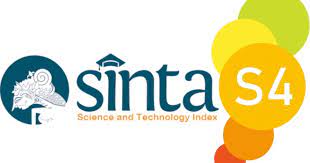The Role of Peer Support in Promoting EFL Achievement: Academic Self-Concept as the Mediator
DOI:
https://doi.org/10.22219/englie.v4i2.26036Keywords:
Peer Support, Foreign Language Self-Concept, EFL Achievement, Mediating Mechanism, Chinese Secondary EFL LearnersAbstract
For secondary school students, peer support is an essential component of social support, which might significantly influence their academic achievement. However, the mediating mechanism between peer support and academic achievement needs to be further explored, especially in teaching English as a foreign language (EFL). The present study explored the relationship between peer support, foreign language (FL) self-concept, and EFL achievement based on the data of 499 Chinese secondary EFL learners. Structural equation modelling (SEM) and mediation analysis results demonstrated that peer support positively affected EFL achievement. FL self-concept fully mediated the relationship between peer support and EFL achievement after controlling for gender and age. The direction and strength of the mediating effect of FL self-concept between peer support and EFL achievement clarify the complex relationship between peer support and EFL achievement and helps EFL teachers and educators take intervention measures. Implications, limitations and directions for future research are discussed.
Downloads
References
Bailey, J. A. (2003). Self-image, self-concept, and self-identity revisited. Journal of the National Medical Association, 95(5), 383–386.
Bergey, B. W., Parrila, R. K., Laroche, A., & Deacon, S. H. (2019). Effects of peer-led training on academic self-efficacy, study strategies, and academic performance for first-year university students with and without reading difficulties. Contemporary Educational Psychology, 56, 25–39. https://doi.org/10.1016/j.cedpsych.2018.11.001
Burns, R. A., Crisp, D. A., & Burns, R. B. (2018). Competence and affect dimensions of self-concept among higher education students: A factorial validation study of an academic subject-specific self-concept. European Journal of Psychology of Education, 33(4), 649–663. https://doi.org/10.1007/s10212-018-0369-x
Byrne, B. M. (2010). Structural equation modeling with AMOS: Basic concepts, applications, and programming. New York: Routledge.
Chen, F. F. (2007). Sensitivity of goodness of fit indexes to lack of measurement invariance. Structural Equation Modeling: A Multidisciplinary Journal, 14(3), 464–504. https://doi.org/10.1080/10705510701301834
Chyung, S. Y. (2007). Age and gender differences in online behavior, self-efficacy, and academic performance. The Quarterly Review of Distance Education, 8(3), 213–222.
Ciarrochi, J., Morin, A. J. S., Sahdra, B. K., Litalien, D., & Parker, P. D. (2017). A longitudinal person-centered perspective on youth social support: Relations with psychological wellbeing. Developmental Psychology, 53(6), 1154–1169. https://doi.org/10.1037/dev0000315
Cutrona, C. E., & Suhr, J. A. (1992). Controllability of stressful events and satisfaction with spouse support behaviors. Communication Research, 19(2), 154–174. https://doi.org/10.1177/009365092019002002
Denies, K., Heyvaert, L., Dockx, J., & Janssen, R. (2022). Mapping and explaining the gender gap in students’ second language proficiency across skills, countries and languages. Learning and Instruction, 80, 101618. https://doi.org/10.1016/j.learninstruc.2022.101618
Dennis, C. L. (2003). Peer support within a health care context: A concept analysis. International Journal of Nursing Studies, 40(3), 321–332. https://doi.org/10.1016/S0020-7489(02)00092-5
Efron, B. (1988). Bootstrap confidence intervals: Good or bad? Psychological Bulletin, 104(2), 293–296. https://doi.org/10.1016/0167-7152(88)90042-9
Ellis, L. A., Marsh, H. W., & Craven, R. G. (2009). Addressing the challenges faced by early adolescents: A mixed-method evaluation of the benefits of peer support. American Journal of Community Psychology, 44, 54–75. https://doi.org/10.1007/s10464-009-9251-y
Fang, G., Chan, P. W. K., & Kalogeropoulos, P. (2020). Social support and academic achievement of Chinese low-income children: A mediation effect of academic resilience. International Journal of Psychological Research, 13(1), 19–28. https://doi.org/10.21500/20112084.4480
Feeney, B. C., & Collins, N. L. (2015). A new look at social support: A theoretical perspective on thriving through relationships. Personality and Social Psychology Review, 19(2), 113–147. https://doi.org/10.1177/1088868314544222
Fernández-zabala, A., Ramos-díaz, E., & Rodríguez-fernández, A. (2020). Sociometric popularity, perceived peer support, and self-concept in adolescence. Frontiers in Psychology, 11, 1–10. https://doi.org/10.3389/fpsyg.2020.594007
Ghaith, G. (2003). The relationship between forms of instruction, achievement and perceptions of classroom climate. Educational Research, 45(1), 83–93. https://doi.org/10.1080/0013188032000086145
Hu, L. T., & Bentler, P. M. (1999). Cutoff criteria for fit indexes in covariance structure analysis: Conventional criteria versus new alternatives. Structural Equation Modeling: A Multidisciplinary Journal, 6(1), 1–55. https://doi.org/10.1080/10705519909540118
Huang, C. (2011). Self-concept and academic achievement: A meta-analysis of longitudinal relations. Journal of School Psychology, 49(5), 505–528. https://doi.org/10.1016/j.jsp.2011.07.001
Hupcey, J. E., Crnp, R., & Rnc, E. (1998). Clarifying the social support theory-research linkage. Journal of Advanced Nursing, 27, 1231–1241. https://doi.org/10.1046/j.1365-2648.1998.01231.x
Kang, X., & Wu, Y. (2022). Academic enjoyment , behavioral engagement, self-concept, organizational strategy and achievement in EFL setting: A multiple mediation analysis. PLoS ONE, 17(4), e0267405. https://doi.org/10.1371/journal.pone.0267405
Kasperski, R., & Blau, I. (2023). Social capital in high-schools: Teacher-student relationships within an online social network and their association with in-class interactions and learning. Interactive Learning Environments, 31(2), 955–971. https://doi.org/10.1080/10494820.2020.1815220
Kaynak, Ü., & Kaynak, S. (2023). The pathway from perceived peer support to achievement via school motivation in girls and boys: A moderated-mediation analysis. RMLE Online, 46(3), 1–13. https://doi.org/10.1080/19404476.2023.2171655
Kelly, J. F., Stout, R. L., Greene, M. C., & Slaymaker, V. (2014). Young adults, social networks, and addiction recovery: Post treatment changes in social ties and their role as a mediator of 12-step participation. PLoS ONE, 9(6), 1–7. https://doi.org/10.1371/journal.pone.0100121
Lee, V. E., & Smith, J. B. (1999). Social support and achievement for young adolescents in Chicago: The role of school academic press. American Educational Research Journal, 36(4), 907–945. https://doi.org/10.3102/00028312036004907
Leung, K. C., Marsh, H. W., Craven, R. G., Yeung, A. S., & Abduljabbar, A. S. (2013). Domain specificity between peer support and self-concept. The Journal of Early Adolescence, 33(2), 227–244. https://doi.org/10.1177/0272431611436130
Liem, G. A. D., & Martin, A. J. (2011). Peer relationships and adolescents’ academic and non-academic outcomes: Same-sex and opposite-sex peer effects and the mediating role of school engagement. British Journal of Educational Psychology, 81(2), 183–206. https://doi.org/10.1111/j.2044-8279.2010.02013.x
Malecki, C. K., & Demaray, M. K. (2002). Measuring perceived social support: Development of the child and adolescent social support scale (CASSS). Psychology in the Schools, 39(1), 1–18. https://doi.org/10.1002/pits.10004
Marsh, H. W., Nagengast, B., Morin, A. J. S., Parada, R. H., Craven, R. G., & Hamilton, L. R. (2011). Construct validity of the multidimensional structure of bullying and victimization: An application of exploratory structural equation modeling. Journal of Educational Psychology, 103(3), 701–732. https://doi.org/10.1037/a0024122
Muthén, L. K., & Muthén, B. (2013). Mplus version 8.3: User’s guide. Los Angels: Muthén & Muthén.
OECD. (2016). PISA 2015 results (Volume I):Excellence and equity in education. Paris: OECD Publishing.
Parada, R. H., Craven, R. G., & Marsh, H. W. (2008). The beyond bullying secondary program: An innovative program empowering teachers to conteract bullying in schools. In H. W. Marsh, R. G. Craven, & D. M. McInerney (Eds.), Self-processes, learning, and enabling human potential: Dynamic new approaches (pp. 373–426). Charlotte: Information Age Publishing.
Podsakoff, P. M., MacKenzie, S. B., Lee, J. Y., & Podsakoff, N. P. (2003). Common method biases in behavioral research: A critical review of the literature and recommended remedies. Journal of Applied Psychology, 88(5), 879–903. https://doi.org/10.1037/0021-9010.88.5.879
Roever, C., & Phakiti, A. (2017). Quantitative methods for second language research: A problem-solving approach. New York: Routledge.
Shalaby, R. A. H., & Agyapong, V. I. O. (2020). Peer support in mental health: Literature review. JMIR Mental Health, 7(6), e15572. https://doi.org/10.2196/15572
Strom, P. S., Hendon, K. L., Strom, R. D., & Wang, C. (2019). How peers support and inhibit learning in the classroom: Assessment of high school students in collaborative groups. School Community Journal, 29(2), 183–202.
Thompson, B., & Mazer, J. P. (2009). College student ratings of student academic support: Frequency, importance, and modes of communication. Communication Education, 58(3), 433–458. https://doi.org/10.1080/03634520902930440
Van Ryzin, M. J., Gravely, A. A., & Roseth, C. J. (2009). Autonomy, belongingness, and engagement in school as contributors to adolescent psychological well-being. Journal of Youth and Adolescence, 38(1), 1–12. https://doi.org/10.1007/s10964-007-9257-4
Wang, Y., Pei, F., Zhai, F., & Gao, Q. (2019). Academic performance and peer relations among rural-to-urban migrant children in Beijing: Do social identity and self-efficacy matter? Asian Social Work and Policy Review, 13(3), 263–273. https://doi.org/10.1111/aswp.12179
Way, N., & Chen, L. (2000). Close and general friendships among African American, Latino, and Asian American adolescents from low-income families. Journal of Adolescent Research, 15(2), 274–301. https://doi.org/10.1177/0743558400152005
Wilgenbusch, T., & Merrell, K. W. (1999). Gender differences in self-concept among children and adolescents: A meta-analysis of multidimensional studies. School Psychology Quarterly, 14(2), 101–120. https://doi.org/10.1037/h0089000
Willoughby, C., Polatajko, H., Currado, C., Harris, K., & King, G. (2000). Measuring the self-esteem of adolescents with mental health problems: Theory meets practice. Canadian Journal of Occupational Therapy, 67(4), 230–238. https://doi.org/10.1177/00084174000670040
Wu, Y., & Kang, X. (2023). Perceived teacher support and EFL achievement: The mediating roles of academic enjoyment and self-concept. International Journal of Linguistics and Translation Studies, 4(2), 38–53. https://doi.org/10.36892/ijlts.v4i2.320
Yang, L., Yan, Z., Zhang, D., Boud, D., & Datu, J. A. (2023). Exploring the roles of academic self-concept and perseverance of effort in self-assessment practices. Assessment in Education: Principles, Policy & Practice, 00(00), 1–26. https://doi.org/10.1080/0969594X.2023.2191161
Yu, J., Wang, Y., Tang, X., Wu, Y., Tang, X., & Huang, J. (2021). Impact of family cohesion and adaptability on academic burnout of Chinese college students: Serial mediation of peer support and positive psychological capital. Frontiers in Psychology, 12, 1–11. https://doi.org/10.3389/fpsyg.2021.767616
Downloads
Published
How to Cite
Issue
Section
License
Copyright (c) 2023 Yajun Wu, Xia Kang

This work is licensed under a Creative Commons Attribution-ShareAlike 4.0 International License.
Authors who publish with English Learning Innovation (englie) agree to the following terms:
- For all articles published in English Learning Innovation (englie), copyright is retained by the authors. Authors give permission to the publisher to announce the work with conditions. When the manuscript is accepted for publication, the authors agree to automatic transfer of the publishing right to the publisher.
- Authors retain copyright and grant the journal right of first publication with the work simultaneously licensed under a Creative Commons Attribution-ShareAlike 4.0 International License that allows others to share the work with an acknowledgement of the work's authorship and initial publication in this journal.
- Authors are able to enter into separate, additional contractual arrangements for the non-exclusive distribution of the journal's published version of the work (e.g., post it to an institutional repository or publish it in a book), with an acknowledgment of its initial publication in this journal.
- Authors are permitted and encouraged to post their work online (e.g., in institutional repositories or on their website) prior to and during the submission process, as it can lead to productive exchanges, as well as earlier and greater citation of published work (See The Effect of Open Access).
This work is licensed under a Creative Commons Attribution-ShareAlike 4.0 International License.
















1.png)












